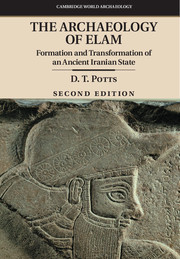Book contents
- Frontmatter
- Dedication
- Contents
- List of illustrations
- List of tables
- Preface to the second edition
- Preface and acknowledgements
- Acknowledgements for photographic reproduction
- List of abbreviations
- Note on transliteration and dating systems
- 1 Elam: what, when, where?
- 2 Environment, climate and resources
- 3 The immediate precursors of Elam
- 4 Elam and Awan
- 5 The dynasty of Shimashki
- 6 The grand regents of Elam and Susa
- 7 The kingdom of Susa and Anshan
- 8 The Neo-Elamite period
- 9 Elam in the Achaemenid empire
- 10 Elymais
- 11 Elam under the Sasanians and beyond
- 12 Conclusion
- References
- Index
9 - Elam in the Achaemenid empire
Published online by Cambridge University Press: 18 December 2015
- Frontmatter
- Dedication
- Contents
- List of illustrations
- List of tables
- Preface to the second edition
- Preface and acknowledgements
- Acknowledgements for photographic reproduction
- List of abbreviations
- Note on transliteration and dating systems
- 1 Elam: what, when, where?
- 2 Environment, climate and resources
- 3 The immediate precursors of Elam
- 4 Elam and Awan
- 5 The dynasty of Shimashki
- 6 The grand regents of Elam and Susa
- 7 The kingdom of Susa and Anshan
- 8 The Neo-Elamite period
- 9 Elam in the Achaemenid empire
- 10 Elymais
- 11 Elam under the Sasanians and beyond
- 12 Conclusion
- References
- Index
Summary
The emergence of the Persians as a major power in western Iran must have been aided by the sustained Assyrian assault on Elam in the seventh century BC. But it is important to stress that, notwithstanding the severity of Assyrian aggression against Elam, the Elamites were neither annihilated nor reduced to a state of utter insignificance. Although historians and archaeologists long ignored the role of Elam and the Elamite population in the emergence of the better known Achaemenid Persian empire (539–331 BC), this has changed in recent years. The very facts that Cyrus the Great established his capital in the heartland of what had been Anshan (Potts 2011a), that Elamite was the language of the earliest Achaemenid inscriptions and the language of the thousands of administrative texts found at Darius’ city of Persepolis, that a number of Elamite rulers tried to rebel against Persian authority and that Elamite deities continued to be worshipped in the Persian-controlled cities point to the continuation of an Elamite tradition in southwestern Iran long after Cyrus came to power (for overviews of southwestern Iran in the Achaemenid period see e.g. Henkelman 2012a and Boucharlat 2013). Nor was Susa, an important city throughout all earlier periods of Elamite history, neglected by the Achaemenids (see Briant 2010 for an overview), and it is from Susa that much of the archaeological evidence of the period comes (Ghirshman 1954b; Perrot 1981, 1985, 2010, 2013). The survival of Neo-Elamite iconography on cylinder seals used in the Achaemenid period is another phenomenon which attests to the survival and transformation of Elamite identity in the Persian period, as does the use of military equipment specifically designated ‘Elamite’ or ‘Susian’ at this time. In the late Achaemenid period, at the time of Alexander the Great's conquest of the Persian empire, we see that the highlands of southwestern Iran were inhabited by a tribal group known as the Uxians, who may well mask the Elamites by another name.
Introduction
The so-called Dynastic Prophecy (II 17–21) made the following prediction concerning the fall of the Neo-Babylonian state: ‘A king of Elam will arise, the sceptre … [he will take?]. He will remove him (the preceding king) from his throne and […].
- Type
- Chapter
- Information
- The Archaeology of ElamFormation and Transformation of an Ancient Iranian State, pp. 307 - 347Publisher: Cambridge University PressPrint publication year: 2015



